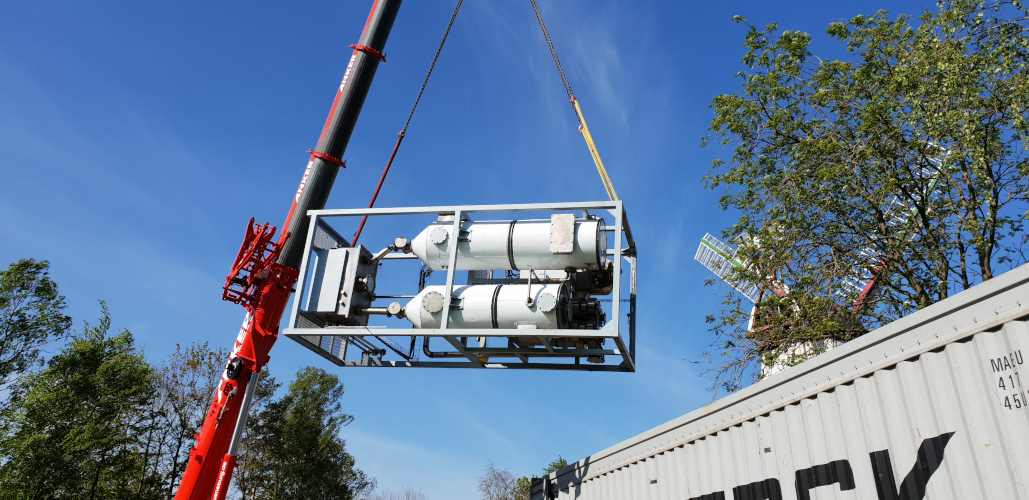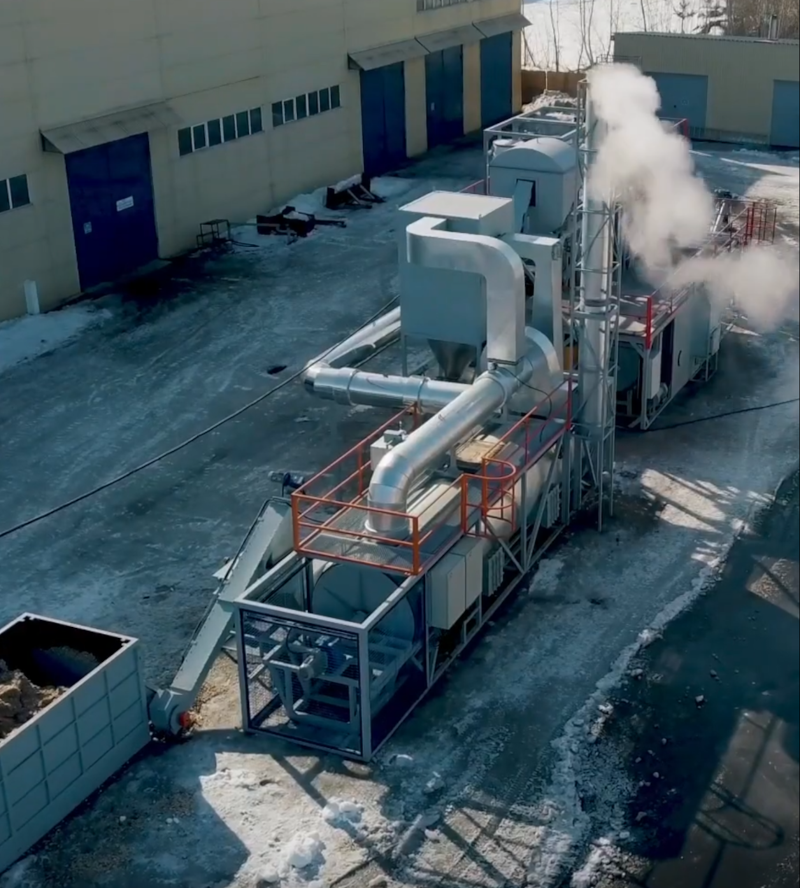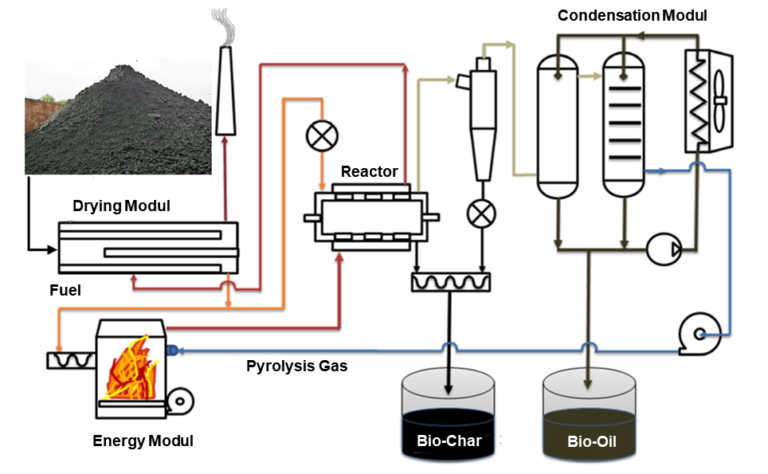





Ablative Fast Pyrolysis Plant
Our Ablative Fast Pyrolysis Plant is designed for the thermochemical processing and utilization of biomass and other organic polymeric wastes to produce liquid and organic products as well as fine char.
The term “ablation” refers to the phenomenon that occurs when a solid, exposed to a high external heat flux, produces new solids, liquids or gases that can be removed quickly and continuously.
(Ablative fast pyrolysis of biomass: A new demonstration project in California, USA)
Closing Product Lifecycle with innovative Technology

In 2020 our first and unique Ablative Fast Pyrolysis System (AFPS) left our hometown Lüneburg on its way to California (USA). The entire modular system has a throughput of 500 kg of biomass per hour and will produce 200.0000 Liter of bio-oil in the course of the project.
The concept of the AFP differs significantly in concept from other methods of fast pyrolysis:
- In ablative pyrolysis, heat is conducted from a hot reactor wall in order to melt biomass that is pressed against the wall. The pyrolysis front moves unidirectional through the biomass body. The remaining oil film provides lubrication and evaporates quickly to volatile components (bio-oil)
- The reaction rate is strongly influenced by the pressure, the relative velocity of the biomass with the heat exchange surface and the reactor temperature
How does the AFPS function?
- Drying Modul: The feedstock is fed into the drying module and gets dried to 10 % moisture content. The dried mass enters the ablative pyrolysis modul via a lock hopper
- Pyrolysis Modul: The thermal decomposition of the feedstock takes place under exclusion of oxygen. The biomass particles are pressed through moving blades sitting on the inner rotating tube against the outer hot reactor wall. A mixture of volatiles and fine coke is produced
- Cleaning module: The volatiles are separated from the coke
- Condensation module: The rapid cooling and condensation of the volatiles leads to the separation of oil and non-combustible gases
- Energy Modul: The produced gases are burned to generate heat
- Discharge module: Coke is discharged for further use as fertilizer or fuel


Structure of the AFPS
- Feedstock storage
- Drying module
- Feeding modul
- Power module
- Pyrolysis module
- Condensation module
- Coke discharge module
- Cleaning module
Modular Components
The modular design enables a quick and easy installation without unexpected costs. By installing additional modules, the system can easily be expanded to the required quantities. The transport of the production complex can be carried out by trucks or trains because the moduls fit into standard ship containers.


Input Materials
The system can be designed for the processing of the following feedstocks:
- Wood Waste
- Agricultural Waste
- Refused Derived Fuel
- Tetra Pack
- Roofing Waste
- Oil Sludge
- Polymer Waste
- Sewage Sludge
- Railwood Trails
Advantages of our Ablative Fast Pyrolysis
Reliable and decentralized disposal of variouse feedstock
Compact design that fits into standard shipping containers
Scalable technology with modular block-structure
Less energy costs:
No transportation gas needed due to the system produces it's own energy
Less preparation costs:
Reactor allows larger particels
High recovery of liquid products for further energy generation
Heat transfer by direct contact:
No heat carrier needed
Our new Pyrolysis Test Rig allows the realistic test of different feedstocks on a small scale. Sufficient data of the utilization of pyrolysis products and engineering parameters for larger plants can easily be obtained. Read more

